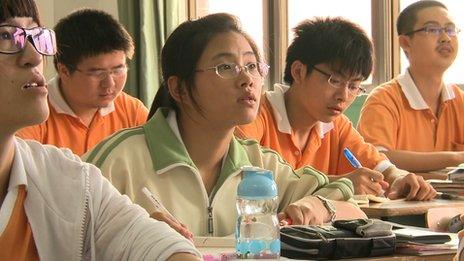China's gaokao: High stakes for national exam
- Published
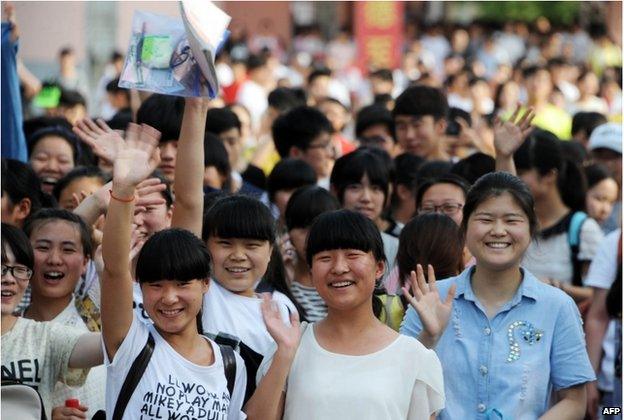
Relieved students in Bozhou in Anhui province were all smiles after they finished the examination
Every year, more than nine million students in China sit a high-stakes examination - the gaokao.
The latest test took place on Sunday and Monday. It is the only way for students to gain entry to university and pressure is high from parents and the nation.
From drones to "gaokao immigrants", the BBC takes a look at the lengths some of the more remarkable stories that have emerged this exam season.
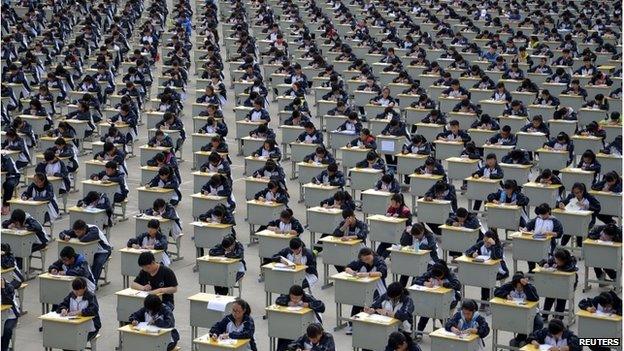
Chinese students undergo regular school examinations, but the gaokao is seen as the most important one
The gaokao is seen as a make-or-break opportunity, especially for those from poorer families, in a country where a degree is essential for a good job.
The exam is tightly policed, but the pressure means cheating is perhaps inevitable.
The authorities have installed closed-circuit television in examination halls and metal detectors at school entrances to ensure students do not sneak in smartphones.
Beijing school officials banned students from bringing in "computerised watches", reported Sina News, and tracked the delivery of examination scripts to schools by GPS to ensure the questions were not leaked beforehand.
Officials in Henan province went as far as deploying a drone carrying a radio scanner to catch cheats.

The drone could fly as high as 500m, but officials said its optimum height was about 100m to 200m
The six-propeller drone hovered over two testing centres in Luoyang city, scanning for radio signals, reported Dahe Online.
Officials said any signals found to be concentrated in the buildings would indicate information was being sent to devices smuggled into examination halls. They said they did not detect any unusual activity.
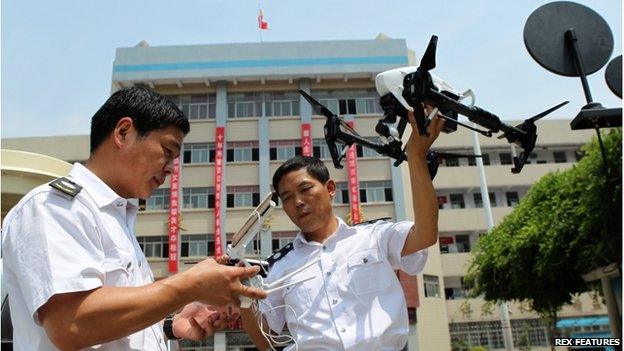
The drone was fitted with a scanner to detect unusual radio signals
But some people were caught attempting to cheat.
Inner Mongolia school authorities disqualified 1,465 students, including the children of several Communist Party officials, after they were found to be illegal "gaokao immigrants", reported Beijing News Daily.
The northern region often draws students from all over the country as its passing grade is lower than other provinces as it is less populated. Each province determines its own set of gaokao questions, and Inner Mongolia's exam is seen as one of the easiest to pass.
It remains unclear how those disqualified got as far as they did without being found out.
Students can only qualify to take the gaokao in Inner Mongolia if they fulfil minimum residency conditions, such as having attended a local school for at least two years.
Police also busted a cheating syndicate in Hubei and Jiangxi provinces where people were paid to pose as students and take the exam on their behalf.
Nine arrests were made after the syndicate's activities were exposed in an undercover investigation by newspaper Southern Metropolis Daily.
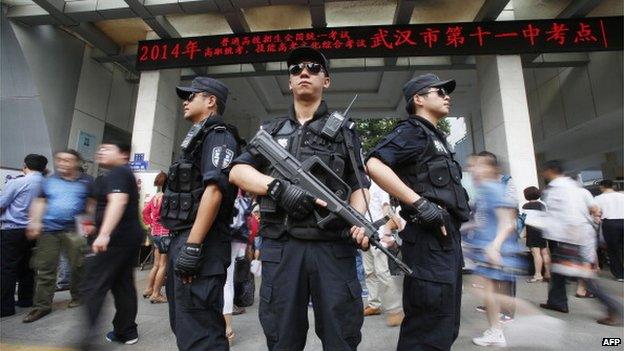
Every year schools ensure tight security for the gaokao, with some deploying armed policemen
Among the sea of fresh-faced teens sitting the exam in Nanjing, 86-year-old Wang Xia, external stood out as the city's - possibly the nation's - oldest test taker.
He is also one of the most persistent. This year marked the 15th time he had taken the exam, after failing in all his previous attempts.
In previous interviews, Mr Wang, who only has vocational training for medical work, said he had always wanted a medical degree to become a fully fledged doctor.
"I don't play mahjong, I don't have any particular hobby, but I do love reading and learning. Others may not support me, but I still want to sit for an exam, it's my spiritual pillar," he said.
Local media also prominently featured disabled students taking the gaokao, hailing them as inspiring examples of dedication.
These included a boy with muscular dystrophy and an armless boy who used his feet to write his answers on his examination script. Both were given extra time to complete their tests.
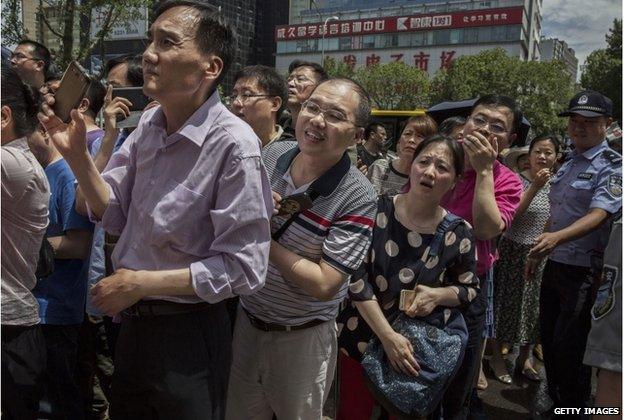
Across the country, parents anxiously waited outside the examination halls as their children took the test
Officials have had to manage not just students but also anxious parents.
Some schools set up care stations for parents as they waited outside examination halls, setting out seats under large umbrellas and providing water.
Stations in Beijing were equipped with emergency medical supplies in case parents had sunstroke, reported Qianlong News.
Meanwhile the education ministry was flooded with complaints from parents in Anhui province after students took an English listening comprehension test in halls that had faulty speakers, reported CNR News.
About 1,200 students were eventually allowed to retake the test.
Additional reporting by Aaron Wong
- Published22 September 2015
- Published8 June 2012
